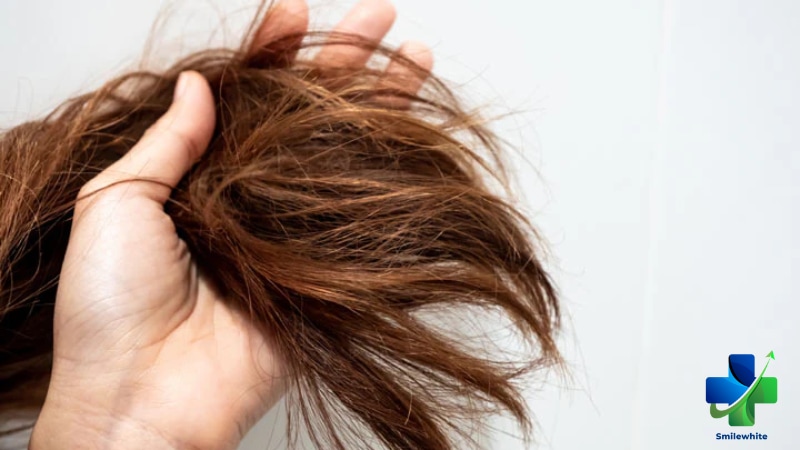Beauty Blog
Is High Porosity Hair Bad? Discover the Truth
To achieve lustrous, stunning hair, it’s vital to grasp the concept of hair porosity alongside understanding your hair’s natural texture and color. High porosity hair, in simple terms, refers to how well your hair absorbs and retains moisture. Hair with high porosity faces specific challenges and requires tailored care.
Understanding your hair’s porosity is key to crafting an effective hair care regimen and choosing suitable products. If you’re committed to nurturing your natural hair, identifying whether you have high porosity hair is crucial. In this comprehensive guide, we delve into the meaning of high porosity hair and offer expert tips for maintaining vibrant and healthy locks.
Is High Porosity Hair Bad?
Knowing about hair porosity is essential for keeping your hair in top condition. Porosity refers to the tiny openings and gaps in your hair strands, which impact how well your hair can soak up and lock in moisture. It’s what decides how easily your hair can absorb water, oils, and other hair products.
If you have high porosity hair, your hair likely has more of these gaps and holes in its core, and the outer layer of your hair (cuticle) might be raised or damaged. This can cause various problems like fragile strands that easily break, split ends that won’t quit, and persistent frizz.

Signs of High Porosity Hair
- Easily Tangles: Constantly battling knots and tangles, even with gentle handling, is a common trait of high porosity hair. The open cuticles make your strands more prone to tangling, resulting in a naturally tousled appearance.
- Lacks Shine: Despite using various hair products, high porosity hair often struggles to retain them, leaving your locks looking lackluster. Sun exposure can exacerbate this lack of shine.
- Dry and Frizzy: High porosity hair readily absorbs moisture from the air, leading to frizz. However, it also loses moisture quickly, leaving your hair dry and susceptible to damage.
- Vulnerable to Breakage: The combination of dryness and tangles often results in weak, brittle strands prone to breakage and split ends.
- Dries Quickly: While fast-drying hair may seem convenient, it indicates that your hair struggles to retain moisture, potentially impacting its overall health and hydration.

The Reason Why Hair Has High Porosity?
How Can You Tell If You Have High Porosity Hair?
- Fill a clear glass or bowl with water.
- Gently place a strand of your hair into the water.
- Observe how quickly the hair sinks to the bottom.

How to Care for High Porosity Hair?
- Condition Regularly: Deep conditioning is crucial for restoring and maintaining moisture levels. Use a deep conditioner or hair mask at least once a week, leaving it on for 15-20 minutes to deeply penetrate the hair cuticles.
- Finish with Cold Water: Conclude your shower with a rinse of cold water to seal the cuticle layer, ensuring moisture from your conditioner or hair mask remains locked in.
- Apply Leave-In Conditioner: High porosity hair requires continuous moisture. Apply a leave-in conditioner to keep your hair hydrated throughout the day.
- Seal in Moisture: After applying leave-in conditioner, use an oil or serum to seal the cuticle, effectively locking in vital moisture and leaving your hair smoother, shinier, and more manageable.
- Avoid Harsh Treatments: Limit the use of color-processing, bleaching, or chemical treatments, as they can raise the cuticle layer and increase porosity.
- Reduce Heat Styling: Minimize heat styling to prevent further damage to the cuticle layer. When using heat, always apply a heat protectant and keep temperatures below 350 degrees Fahrenheit.
FAQs
Does High Porosity Hair Need Protein?
Protein treatments can aid in repairing the hair cuticle, lowering hair porosity, and forming a protective barrier around the hair shaft.
Is Rice Water Good for High Porosity Hair?
Indeed, rice water acts as a protein treatment, mimicking proteins, and can be advantageous for curly and damaged high porosity hair. It helps improve hair condition while effectively cleansing the scalp of buildup.
Conclusion
Having high porosity hair doesn’t signify the end of beautiful, healthy hair. Understanding your hair’s porosity is crucial, but it’s only the beginning. The key lies in discovering the suitable products and mastering the right hair care routine. Is having high porosity hair a drawback? Absolutely not. Armed with the proper knowledge and regimen, you can effectively manage high porosity hair and maintain its optimal appearance
